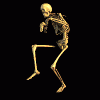-
Latest Postings
-
-
0
Aftermarket Air Intake
Hey all, Just recently bought a 2007 TRD Aurion and am trying to find an aftermarket Air Intake, but am coming to the realisation that there is a very limited market for TRD Aurions. So far the only system I've been able to find is a K&N Typhoon Intake (link here: https://www.carmodsaustralia.com.au/KN-Filters-69-8611TS-69-Series-Typhoon-Performance-Air-Intake-System-Camry-35L-07-11?cq_src=google_ads&cq_cmp=18898892770&cq_con=&cq_term=&cq_med=pla&cq_plac=&cq_net=x&cq_plt=gp&gad_source=1&gclid=Cj0KCQjwpZWzBhC0ARIsACvjWRP893VLnAQsxIZJjcW5Go75b_T2N25rSWBVu6IeDziM2v41bpeyOREaAg1fEALw_wcB), however when viewing specifications for the product it states it fits Camry's from 2007-2011. Further digging revealed this product is an import from the USA hence why it's for a Camry - they don't have Aurions there. I am aware that they both share the 2GR-FE engine so I'm assuming the product will be able to be retrofitted to my TRD, provided the throttle body intake is the same diameter across Supercharged 2GR-FE's and N/A 2GR-FE's. Has anyone else in Aus had any luck sourcing/fitting one of these K&N Intakes, or know of another brand that do them specifically for the TRD Aurion's. Pretty confident in just ordering the aforementioned kit but their return policy sucks (can't return and refund if packaging has been opened, etc). Cheers guys! Jason. -
0
Heater problems
My Toyota Celica SX blows cold air at the driver’s side when the heater is on, and it is an absolute nuisance. I get that it takes a while for the heater to work properly, but some reason after I have the heater on, it starts blowing out cold air even after a good warm up! I feel like the heater core may need replacing or the air conditioner/heater needs re-gassing. -
0
Entertainment Unit Upgrade
Hi everyone. Just after some advice on head unit upgrade. I'm looking to upgrade the functionality of the entertainment system to do a few things - display my dual camera from my caravan, utilise the HEMA OnRoad/OffRoad module, stream to the rear screens, and include wireless apple play. I've narrowed down to the most popular which seems to be Advanced Ice, EC Offroad and Galios - but none seem to do all four functions seamlessly. Not sure if I'm actually looking for a unicorn or not...has anyone had any experience in installing one of these systems and has it done all the functions? Any regrets? Cheers Mark -
0
Toyota 79 dual cab seating malalignment to pedals & backpain
Has anybody experienced back pain sitting in drivers seat in 79 dual cab due to malalignment with pedals - on a trip any suggested solutions? -
1
Seat change
Hi mate can you let me know how you go installing carolla seats in a hilux with pics -
0
KUN26R Hilux Single Cab - Tray to Tub
Hi everyone, I own a 2011 Toyota Hilux KUN26R. It currently has a tray. I am looking for a single cab tub (image for reference below). I have a couple of questions for everyone: - Were KUN26R's ever released in Australia with a single cab tub as an option? I have looked high and low over all sorts of marketplaces within Australia and honestly cannot seem to find one. I don't believe I have ever seen one on the streets of Aus either. - Does anyone have experience making this conversion? Where can I find a tub? I have found some examples of the style side single cab KUN26R's in the UK, EU, Africa and Thailand but in all instances it has been part of a whole car sale and the sellers have not been willing to part out. Even so, if there is the chance that I can buy this tub in Australia it would be much better as it would save the hassle of organising freight. Thanks everyone in advance. I'm jealous of overseas countries who seem to have gotten this model in abundance. -
0
1993 Corolla Seca CSI limited
1993 CSI limited Corolla Seca hatchback 80k kms. We are the second owner and have complete service and maintenance records of the car from new. Previously owned from new by older lady who rarely drove the car in the final years. Very neat and tidy vehicle. Unfortunately another vehicle has reversed into the car and their towball caused some damage to radiator, air con system and fan. The right person could easily fix the vehicle. We are just not in a financial position to do this. We cannot bear to send the car to salvage so posting here in hope that another Toyota enthusiast is interested incontinuing the life of the car. These cars are much loved and we have loved our “Beryl” during her time with us. Please feel free to ask questions. Open to offers above $3k -
0
Corolla Seca For Sale
1993 CSI limited Corolla Seca hatchback 80k kms. We are the second owner and have complete service and maintenance records of the car from new. Previously owned from new by older lady who rarely drove the car in the final years. Very neat and tidy vehicle. Unfortunately another vehicle has reversed into the car and their towball caused some damage to radiator, air con system and fan. The right person could easily fix the vehicle. We are just not in a financial position to do this. We cannot bear to send the car to salvage so posting here in hope that another Toyota enthusiast is interested in continuing the life of the car. These cars are much loved and we have loved our “Beryl” during her time with us. Please feel free to ask questions. -
0
High mileage camry
My 2003 camry Sportivo 2.4 has 383000 kilometres . Running well, very economical, uses litre of oil between services. How much longer can it last ?
-







Recommended Posts
Join the conversation
You can post now and register later. If you have an account, sign in now to post with your account.